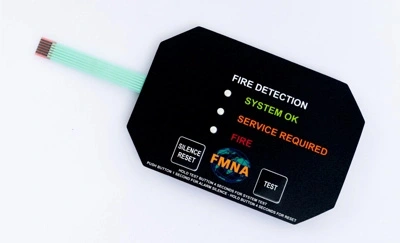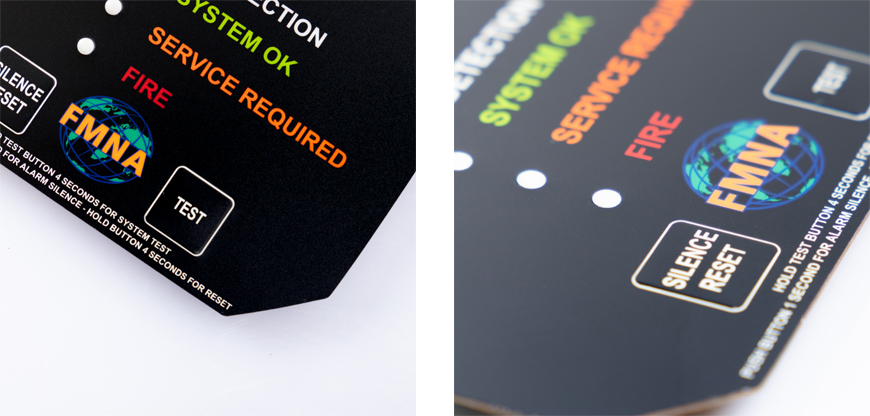
In today's rapidly advancing technological landscape, the demand for sleek and efficient user interfaces is higher than ever before. One of the essential components in achieving this is the "lowest profile membrane switch." This article will dive deep into the world of membrane switches, exploring what they are, their advantages, and how they are transforming industries. So, fasten your seatbelt as we embark on a journey to understand the lowest profile membrane switch!

Introduction
Understanding Membrane Switches
The Importance of Low Profile
What Are Membrane Switches?
Basic Structure and Functionality
Membrane Switch vs. Mechanical Switch
Advantages of Lowest Profile Membrane Switches
Sleek Design and Aesthetics
Durability and Longevity
Cost-Effective Solution
Applications Across Industries
Electronics and Gadgets
Medical Devices
Automotive Industry
Choosing the Right Membrane Switch
Material Selection
Customization Options
Environmental Considerations
Manufacturing Process
Printing and Cutting
Assembly and Testing
Maintenance and Care
Cleaning and Protection
Troubleshooting Common Issues
Future Trends
Integration with IoT
Advanced Materials
Haptic Feedback
Conclusion
Frequently Asked Questions
In a world where technology plays a pivotal role in our daily lives, the need for intuitive user interfaces cannot be overstated. Membrane switches, particularly the lowest profile ones, have emerged as a solution that combines aesthetics, functionality, and durability.
Basic Structure and Functionality
Membrane switches are thin, flexible electronic switches that utilize pressure-sensitive adhesives to perform various functions. They consist of several layers, including graphic overlays, spacer layers, and conductive circuits. When pressure is applied to the top layer, it completes an electrical circuit, triggering the desired action.
Membrane Switch vs. Mechanical Switch
Compared to traditional mechanical switches, membrane switches offer a more compact and low-profile design. They eliminate the need for physical actuation, resulting in a smoother and quieter operation.
Sleek Design and Aesthetics
Lowest profile membrane switches are incredibly thin, providing a sleek and modern look to electronic devices. Their design flexibility allows for custom graphics and backlighting, enhancing the visual appeal.
Durability and Longevity
These switches are built to withstand harsh environments and heavy usage. With no moving parts, they have a longer lifespan and are resistant to wear and tear.
Cost-Effective Solution
Manufacturing membrane switches is a cost-effective process, making them an affordable choice for various industries without compromising on quality.
Electronics and Gadgets
From remote controls to touch panels, membrane switches are widely used in consumer electronics for their compact size and reliability.
Medical Devices
Low profile membrane switches find applications in medical equipment due to their easy cleaning and resistance to moisture and contaminants.
Automotive Industry
In vehicles, these switches are used for dashboard controls, providing a tactile response and enhanced durability.
Material Selection
Selecting the right materials is crucial for meeting specific application requirements, including resistance to chemicals, UV exposure, and extreme temperatures.
Customization Options
Manufacturers offer customization options such as tactile feedback, embossing, and LED integration, allowing for tailored solutions.
Environmental Considerations
Lowest profile membrane switches are eco-friendly and energy-efficient, contributing to sustainability goals.
Printing and Cutting
Graphic overlays are printed with user-friendly graphics and icons before being precisely cut to shape.
Assembly and Testing
The layers of the membrane switch are assembled, and rigorous testing ensures quality and functionality.
Cleaning and Protection
Regular cleaning with mild solutions and protective covers can prolong the lifespan of membrane switches.
Troubleshooting Common Issues
Simple troubleshooting steps can help resolve issues like unresponsive keys or damaged overlays.
Integration with IoT
Membrane switches are expected to play a significant role in the Internet of Things (IoT) by providing a seamless interface for smart devices.
Advanced Materials
Innovations in materials will lead to even thinner and more robust membrane switches.
Haptic Feedback
The integration of haptic feedback will provide users with tactile sensations, enhancing the user experience.
Lowest profile membrane switches are the unsung heroes behind the sleek and efficient user interfaces we interact with daily. Their durability, aesthetics, and cost-effectiveness make them a vital component in various industries.
Are membrane switches waterproof?
Yes, many membrane switches are designed to be waterproof or resistant to moisture.
Can I get custom graphics on my membrane switch?
Absolutely! Membrane switches can be customized with graphics, logos, and icons.
What is the typical lifespan of a membrane switch?
Membrane switches can last for millions of actuations, making them highly durable.
Do membrane switches require specialized cleaning?
Not necessarily. Regular cleaning with mild solutions is usually sufficient.
How do I integrate membrane switches into my product design?
You can work with manufacturers to design and customize membrane switches according to your product specifications.